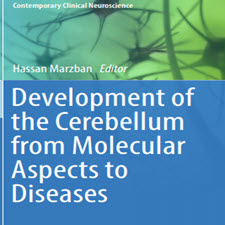Development of In Vitro Maturation for Human Oocytes
ABSTRACT
The following factors are involved in the ovarian cycle (i.e., follicular development, ovulation, and corpus luteum formation) and the regulation of menstruation as a result of luteal regression. All these factors are so- called “classical hormones” that are secreted by specific cells or organs. These factors affect target organs via the bloodstream and constitute the core of the feedback mechanism of the diencephalon (hypothalamus)– pituitary–ovary–uterus system. A. Gonadotropin-releasing hormone (GnRH); B. Gonadotropins: follicle- stimulating hormone (FSH) and luteinizing hormone (LH); C. Steroid hormones: estrogen, androgens, progesterone, glucocorticoids, and mineralocorticoids; and D. Glycoproteins: inhibin, activin, follistatin, and anti-Müllerian hormone (AMH). In this chapter, particularly important aspects of hormones A–D are selected and described. The menstrual cycle is controlled via regulation of GnRH, which is synthesized by the hypothalamus. GnRH, a polypeptide composed of 10 amino acids (Glu-His-Trp-Ser-Tyr-Gly-Leu-ArgPro-Gly- NH2), is a hormone that is secreted by the hypothalamus and that has an extremely short half-life (2–3 min). The GnRH-1 gene (GNRH1) is located on human chromosome 8 (8p11.2-p21) and produces a 92-amino acid precursor peptide called prepro-GnRH, which includes a signal sequence (23 amino acids), GnRH (10 amino acids), a proteolytic processing site (3 amino acids), and GnRH-associated peptide (56 amino acids).
INTRODUCTION
GnRH is secreted in a rhythmic fashion, and in response to this, gonadotropins are also secreted rhythmically from the pituitary. GnRH secretion is extremely crucial in the maintenance of the menstrual cycle. In the follicular phase of the menstrual cycle, GnRH pulses occur every 60– 90 min. Under such physiological conditions, GnRH induces a priming effect of gonadotropinsecreting cells in the pituitary, consequently upregulating GnRH receptors and enhancing their responsiveness to GnRH molecules. However, when GnRH is activated with a continual pulse or with pulses that occur at a greater frequency than physiological levels, GnRH receptors decline and responsiveness also decreases (downregulation) . In the latter half of the follicular phase, GnRH secretion cycles become shorter, and the amount of secretion increases as ovulation approaches; however, in the luteal phase, these cycles rapidly become longer and the amount of secretion further increases.
چکیده
عوامل زیر در چرخه تخمدان (به عنوان مثال، توسعه فولیکول، تخمک گذاری و تشکیل لوزی corpus) و تنظیم قاعدگی در نتیجه رگرسيون لوتئال دخيل هستند. همه این عوامل به اصطلاح “هورمون های کلاسیک” هستند که توسط سلول ها یا ارگان های خاص ترشح می شوند. این عوامل بر بدن اعضای بدن از طریق جریان خون تأثیر می گذارد و هسته مکانیسم بازخورد سیستم تناسلی – هیپوتالاموس – هیپوفیز تخمدان – رحم را تشکیل می دهد. A. گنادوتروپین هورمون آزاد (GnRH)؛ B. Gonadotropins: هورمون تحریک کننده فولیکول (FSH) و هورمون لووتیونی (LH)؛ C. هورمون های استروئید: استروژن، آندروژن، پروژسترون، گلوکوکورتیکئوئید ها و مواد معدنی و داروئی. و D. Glycoproteins: inhibin، activin، follistatin، و هورمون anti-Mellerian (AMH). در این فصل، به خصوص جنبه های مهم هورمون A-D انتخاب و توصیف می شود. چرخه قاعدگی از طریق تنظیم GnRH کنترل می شود که توسط هیپوتالاموس تولید می شود. GnRH، یک پلیپپتید متشکل از 10 اسید آمینه (Glu-His-Trp-Ser-Tyr-Gly-Leu-ArgPro-Gly-NH2)، یک هورمون است که توسط هیپوتالاموس ترشح می شود و دارای نیمه عمر کوتاه 2-3 دقیقه) ژن GnRH-1 (GNRH1) بر روی کروموزوم 8 انسان (8p11.2-p21) قرار دارد و یک پپتید پیش ساز پیشگیرنده اسید آمینه به نام prepro-GnRH تولید می کند که شامل توالی سیگنال (23 آمینو اسید)، GnRH (10 آمینو اسیدها)، یک سایت پردازش پروتئولیتیک (3 آمینو اسید) و پپتید مرتبط با GnRH (56 اسید آمینه).
مقدمه
GnRH به صورت ریتمیک ترشح می شود و در پاسخ به این، گنادوتروپین ها نیز به صورت ریتمی از هیپوفیز ترشح می شوند. ترشح GnRH در حفظ چرخه قاعدگی بسیار مهم است. در فاز فولیکولی چرخه قاعدگی، پالسهای GnRH هر 60 تا 90 دقیقه رخ می دهد. در چنین شرایط فیزیولوژیکی، GnRH سبب ایجاد التهاب سلولهای گنادوتروپین در هیپوفیز، در نتیجه تنظیم کننده گیرنده های GnRH و افزایش پاسخ آنها به مولکول های GnRH می شود. با این حال، هنگامی که GnRH با یک پالس مداوم یا با پالسهایی که در فرکانس بیشتر از سطح فیزیولوژیکی رخ می دهد، گیرنده های GnRH کاهش می یابد و پاسخگویی نیز کاهش می یابد (downregulation). در نیمه دوم فاز فولیکول، دوره های ترشحی GnRH کوتاه تر می شود و میزان ترشح به عنوان روش تخمک گذاری افزایش می یابد؛ با این حال، در فاز لوتئال، این چرخه ها به سرعت در حال افزایش است و میزان ترشح بیشتر افزایش می یابد.
Year: 2016
Publisher: SPRINGER
By : Ri-Cheng Chian, Geeta Nargund ,Jack Y.J. Huang
File Information: English Language/ 373 Page / size: 8.20 MB
سال : 1395
ناشر : SPRINGER
کاری از : ری چنگ چیان، گیتا نرگند، جک جی جی هوانگ
اطلاعات فایل : زبان انگلیسی / 373 صفحه / حجم : MB 8.20


![Development.of.In.Vitro.Maturation.for.[taliem.ir]](https://taliem.ir/wp-content/uploads/Development.of_.In_.Vitro_.Maturation.for_.taliem.ir_.jpg)
![liBeralization, migration, and development[taliem.ir] liBeralization, migration, and development[taliem.ir]](https://taliem.ir/wp-content/uploads/liBeralization-migration-and-developmenttaliem.ir_.jpg)
![Design and development of logistics workflow systems for demand[taliem.ir] Design and development of logistics workflow systems for demand[taliem.ir]](https://taliem.ir/wp-content/uploads/Design-and-development-of-logistics-workflow-systems-for-demandtaliem.ir_.jpg)
![Development of prebiotic food products and health benefits[taliem.ir] Development of prebiotic food products and health benefits[taliem.ir]c](https://taliem.ir/wp-content/uploads/Development-of-prebiotic-food-products-and-health-benefitstaliem.ir_.jpg)
![On the Research and Development[taliem.ir] On the Research and Development[taliem.ir]](https://taliem.ir/wp-content/uploads/On-the-Research-and-Developmenttaliem.ir_.jpg)
![Information systems and sustainable supply chain management[taliem.ir] Information systems and sustainable supply chain management[taliem.ir]](https://taliem.ir/wp-content/uploads/Information-systems-and-sustainable-supply-chain-managementtaliem.ir_.jpg)

![Development of Oral[taliem.ir] Development of Oral[taliem.ir]](https://taliem.ir/wp-content/uploads/Development-of-Oraltaliem.ir_.jpg)
![Handbook.of.Life.Course.Health.Development.[ta;iem.ir] Handbook.of.Life.Course.Health.Development.[ta;iem.ir]](https://taliem.ir/wp-content/uploads/Handbook.of_.Life_.Course.Health.Development.taiem_.ir_.jpg)

![ECMO.in.the.Adult.Patient.[taliem.ir]](https://taliem.ir/wp-content/uploads/ECMO.in_.the_.Adult_.Patient.taliem.ir_-150x150.jpg)
![Clinical.Reproductive.Medicine.and.Surgery.[taliem.ir]](https://taliem.ir/wp-content/uploads/Clinical.Reproductive.Medicine.and_.Surgery.taliem.ir_-150x150.jpg)
دیدگاه خود را ثبت کنید
تمایل دارید در گفتگو شرکت کنید؟نظری بدهید!